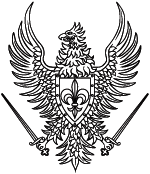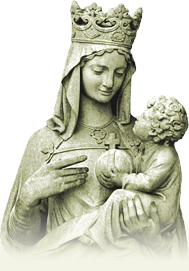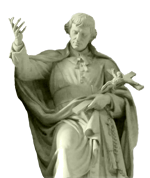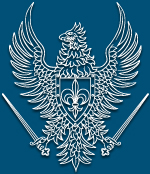Church and Religion
Who was Joseph Ratzinger? And who is Benedict XVI?
Dr. Robert Moynihan
Last Year and This Year
[Inside the Vatican editorial for January 2006, by Dr. Robert Moynihan]
In this issue of Inside the Vatican, the cover photo is of our "Man of the Year," Pope Benedict XVI, walking in his white papal robes, waving. He looks very happy, joyful, serene. This is perhaps the most remarkable thing so far about his pontificate: that it has been quiet, serene, even, one might say, happy.
Who would have expected it? The "image" the world had of Joseph Ratzinger the "Grand Inquisitor," intransigent head of the former "Holy Office of the Inquisition," has been totally shattered by the reality of Benedict. And so we confront the issue of image and substance, of appearance and reality. Who was Joseph Ratzinger, really? And who is Benedict XVI? Are they the same man? Or has something changed?
One thing is clear: it is in the transition from "Jospeh Ratzinger" to "Benedict XVI" that the story of this pontificate will be written . Every Pope is two men. This is so because every Pope has two names. This Pope was Joseph Ratzinger (as previous ones were Karol Wojtyla, or Eugenio Pacelli). Now he is Benedict XVI (and Wojtyla was John Paul II, and Pacelli was Pius XII). As men, they have the name their parents gave them, the names they bore as children, their baptismal names; as successors of Peter, they have new names, the ones chosen at the moment of election to the papal throne.
What does this mean? It means that there is a tension within each person who takes the throne of Peter, a tension at the crossroads of his most intimate identity: his name . Each Pope was one man; now he is another.
As Joseph Ratzinger, this Pope had a very particular identity. He was a German, from Bavaria, the son of an anti-Nazi police officer, who grew up under the totalitarian Nazi regime, in the pre- conciliar Church. He was a theologian who studied Augustine and Bonaventure, who labored at the Second Vatican Council in the strength and passion of his youth, who became a professor, then a bishop, then a cardinal, and indeed, arguably the most influential of all the cardinals in the Church for a quarter century.
And then, on April 19,2005, just a few days before his 78th birthday, he changed his name. He was no longer Joseph; he was Benedict. And the 16th in a long line of Benedicts.
There has been a remarkable silence in Rome for nine months . The new Pope's inner circle is very small and tight. There have been no "leaks" in this pontificate.
So what has been going on? Benedict has been "putting on" his new name . He has been adjusting to the dramatic change that occurred in his identity on April 19. (One way he has been doing this is by praying the rosary daily with his personal secretary.) He is no longer Joseph Ratzinger, but Benedict. He is becoming Benedict to himself, and will become Benedict before our eyes during 2006 and after. We will all soon see who Benedict really is.
What are the problems Benedict faces? They are many, and yet finally reducible to just one: the faith. To teach the faith. To bear witness to the faith. To believe in Christ, to preach that belief, to live that belief. We all know the consequences of the loss of faith: selfishness, sin, cruelty, oppression, strife, division, suffering, disease, tears, hatred, death. And so, for anyone who loves God and his fellow man, the remedy for the sorrows of this world is evident: faith. The results of faith are equally clear: generosity, self-sacrifice, tenderness, mercy, peace, unity, serenity, healthy laughter, love, life.
The overall "plan" of Benedict's pontificate can be nothing other than this -- as it is the overall plan of all Popes: to preserve the faith. To defend the faith. To teach the faith. To confirm others in the faith.
The many problems in the Church, and in the world, which worry all of us -- economic problems, debts, poverty; political problems, international tensions, wars and rumors of wars; personal problems, sickness, sadness, loneliness; ecclesial problems, the breaking of vows, the commission of sins -- all these problems can only be addressed from the foundation of the faith handed down to us from the beginning.
In this issue, we chose Benedict as our "Man of the Year" because he is the one all Catholics look to now to teach the faith, preach the faith, defend the faith, that is, to be the Vicar of Christ on earth.
And we have chosen nine other men and women to round out our "Top Ten People of 2005," people who, each in his or her own way, are bearing witness, not perfectly, yet truly, to that faith which is the hope of the world and of mankind.
Is the faith weak? Yes. But in this weakness, there is humility, and in humility, there is the seed of strength.
Are there wars in the world? Yes. But there are also peacemakers, and through faith and perseverance in the faith, those who work for peace will not cease their efforts.
Are there sexual sins committed? Yes. But there are also those who strive for purity, who seek chastity, and they provide a powerful witness in this fallen world.
Has the Church gone off the rails? Humanly speaking, we are in difficulty . Many parish churches are closing, many priests sinful, many Christians lukewarm, many children not taught except by secular computer games, many old people not accorded dignity, and some of the most passionate believers seem arrogant, intolerant, uncharitable. So the Church does seem to be passing through a collective "dark night."
Into this "dark night" has come Pope Benedict . It will be his task to shine the light of faith into this present darkness.
- Dr. Robert Moynihan
Para citar este texto:
"Who was Joseph Ratzinger? And who is Benedict XVI?"
MONTFORT Associação Cultural
http://www.montfort.org.br/eng/imprensa/igreja/20060119/
Online, 25/12/2025 às 05:00:53h








